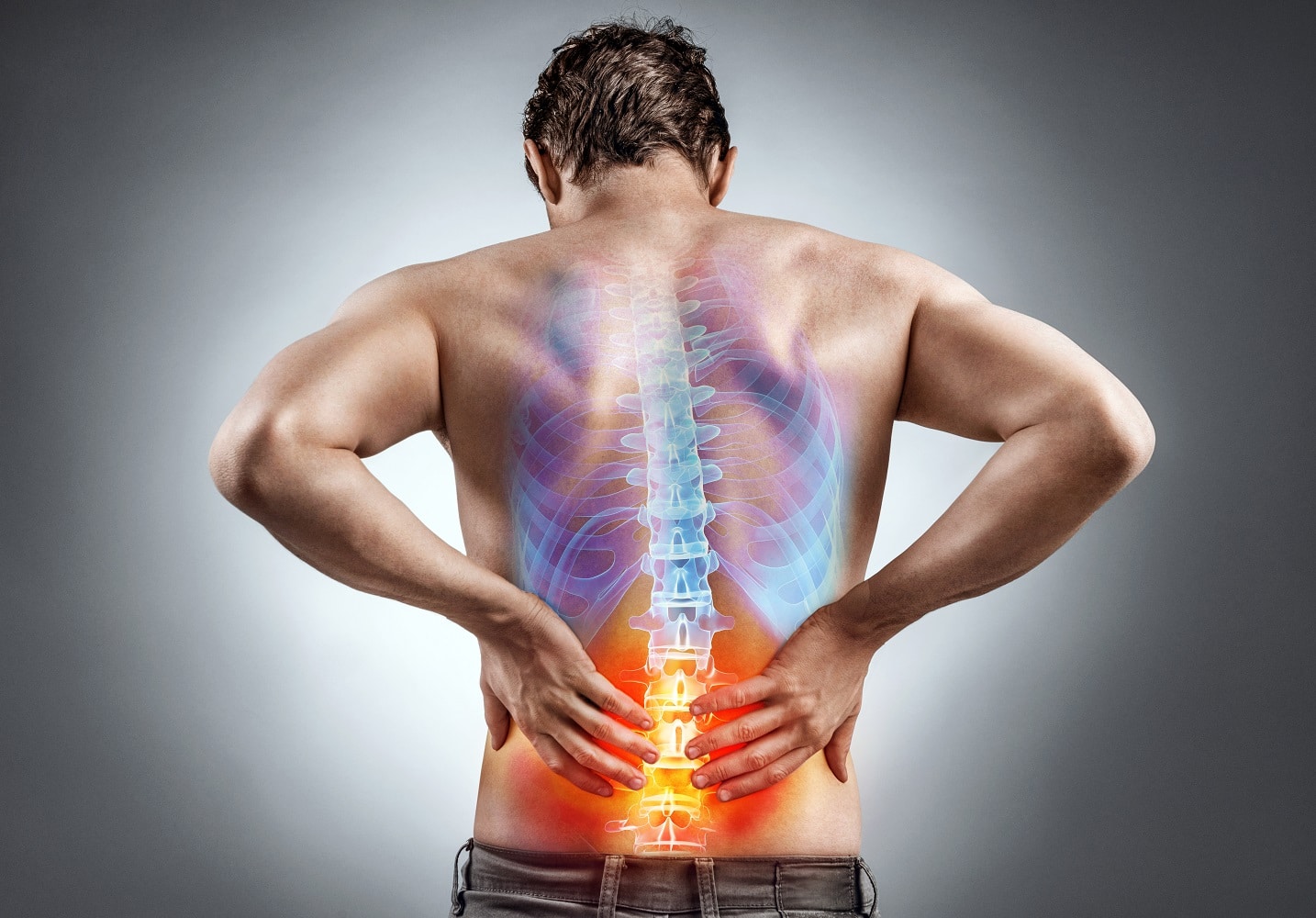There are many different treatments for spine pain. The proper treatment should take into account the underlying cause, prior treatments attempted, and any co-existing medical problems. Typically, a stepwise approach to treatments is taken, starting with the least invasive treatments (medications and physical therapy) to the most invasive (surgery).
Treatments are often divided into four categories:
- Medications – Medications can either be taken orally (by mouth) or applied topically (on the skin). Non-steroidal anti-inflammatory medications (NSAIDs), such as ibuprofen, are common first line treatments. More severe pain may be treated with opioids or muscle relaxants with extreme caution. Topical medications, which can be applied on the skin, include capsaicin cream or lidocaine patches.
- Physical Medicine & Rehabilitation – Some common treatments in this category include heat application, exercises, physical therapy, and spinal manipulation therapy (SMT).
- Invasive but Non-surgical – These treatments include steroid injections and nerve ablation therapy.
- Surgical – Often considered a treatment of “last resort”, surgeries can either decompress pressure on the spinal cord or nerves (such as a discectomy or laminectomy) or stabilize the spine (fusion).
The treatments in Table 1 are non-surgical treatments with supporting evidence and are recommended as potential options by the the North American Spine Society (NASS)³. In addition to this table, there are many other potential treatment options.
| Medications | Physical Medicine and Rehab | Invasive but Non-Surgical |
| – NSAIDs (Ibuprofen, Naproxen) – Opioids (extreme caution) – Topical capsaicin | – Physical therapy – Heat application – McKenzie Exercise – Yoga – Acupuncture – Spinal Manipulative therapy (SMT) | – Steroid Injections – Ablation / Neurotomy |
Medications
There are many medications to treat back pain that work in various ways. The Non-steroidal anti-inflammatory medications are the most common and work by treating pain and reducing inflammation. Steroids also work by decreasing inflammation. Opioids can be effective for short term treatment of severe pain but should be used with extreme caution. Anticonvulsants and antidepressants also can potentially help with pain, although their exact mechanism of action is unclear. Below is a list of various medications and their potential side effects.
| Medication Class | Examples | Potential Side Effects |
| Non-Steroidal Anti-Inflammatory (NSAIDs) | Ibuprofen (Motrin), Naproxen (Alieve), Diclofenac | – Gastrointestinal upset / ulcers – Kidney damage |
| Steroids | Prednisone, Methylprednisolone (Medrol) | – Gastrointestinal upset – Difficulty sleeping – Difficulty controlling glucose (in diabetics) |
| Muscle Relaxants | Cyclobenzaprine (Flexeril), Diazepam (Valium), Baclofen | – Dizziness – Drowsiness |
| Opioids | Hydrocodone (Vicodin), Oxycodone (Percocet) | – Addiction – Nausea and vomiting – Drowsiness |
| Anticonvulsants | Gabapentin (Neurontin), Pregabalin (Lyrica), Carbamazepine (Tegretol) | – Dizziness – Drowsiness |
| Antidepressants | Duloxetine (Cymbalta), Venlafaxine (Effexor), Amitriptyline | – Dizziness – Drowsiness |
| Topical Medications | Lidocaine patches, Capsaicin cream | – Skin irritation |
Physical Medicine and Rehab
Exercise and physical therapy are common treatments for neck and back pain. In general they are safe and research shows they are effective. Activity that may help your pain include yoga and exercise (for example McKenzie exercises for back pain). Other specialized exercises, under the care of a physical therapist, may help your pain as well.
Other treatments, such as heat application and acupuncture have shown benefit in some research studies. Other less common treatments may include transcutaneous electrical nerve stimulation (TENS) and laser-cutaneous stimulation for purpose of pain modulation.
Invasive but Non-surgical (e.g. injections and ablation)
Some treatments require a specialist and involve a procedure but are not as invasive as surgery. Epidural Steroid Injections (ESI) involve injecting a local anesthetic and a steroid medication directly into the area that surrounds the spinal cord and nerve roots. A similar procedure can be done on the sacroiliac joints in your back. These injections may decrease inflammation and help with pain.
An ablation, also known as a neurotomy, uses heat or freezing to disrupt nerve fibers and decrease pain. Needles are placed near the painful nerve and an electrical current disrupts the nerve and creates scar tissue so it can no longer transmit pain signals.
Surgical
Surgery is typically reserved for severe cases and when all other treatments have been attempted without success. Surgery is also only indicated if there is a mechanical issue causing your symptoms such as compression or instability in your spine.
Decompression (e.g. Laminectomy & Discectomy)
Some surgeries, known as decompression surgeries, are performed to decrease the pressure on your spinal cord or nerve roots. A laminectomy is a surgical procedure which removes part of the vertebra, known as the lamina, which acts as the roof of the spinal cord. A discectomy removes abnormal disc material that may be pressing on the spinal cord or nerve roots.
Fusion
Another surgery, known as a fusion, joins two or more vertebra into a single structure. These are done to treat spinal instability as well as to stop movement between bones and prevent pain.
